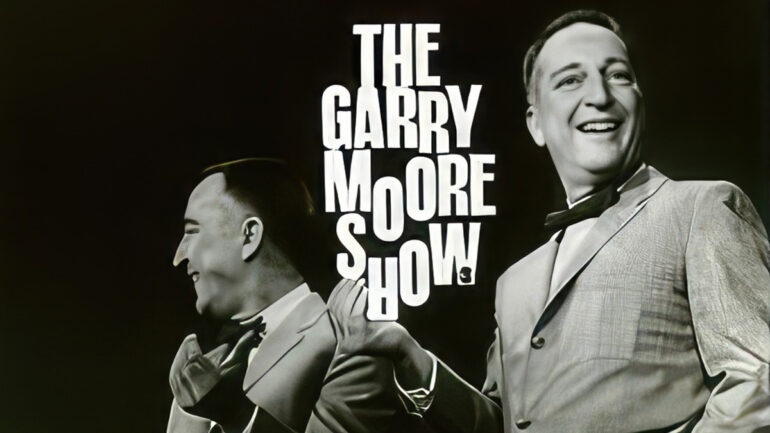"There is something durably unremarkable about me," Garry Moore once said, modestly evaluating his remarkable longevity as game and variety show host and comedian over the course of almost three decades on the small screen. Compact in size and genial in manner, Moore began on the radio as a writer and performer while still a teenager. He achieved success on local radio shows in his native Baltimore, St. Louis and Chicago before enjoying almost five years of success teamed with Jimmy Durante in the mid-40s.
Moving into TV during its earliest days, Moore quickly became one of its most popular and easily recognized personalities, famous for his wide-eyed expression, perennial buzzed haircut, and bow ties. The variety format of "The Garry Moore Show," whose talented cast of regulars included at various times Dorothy Loudon, Ken Carson, Marion Lorne and Moore's most durable sidekick, announcer Durward Kirby, proved popular from 1950 until 1964. It was this show which first highlighted Moore's most important star discovery, Carol Burnett, who joined the gang for a number of seasons. Running concurrently during much of this time was the popular CBS game show "I've Got a Secret," in which Moore hosted a celebrity panel which attempted to determine a mystery guest's secret."
The Garry Moore Show" began losing ground in the mid-1960s and was cancelled; a later attempt several seasons later was not successful, but Moore soon rebounded with another long-running game show hit, "To Tell the Truth" (syndicated, 1969-76). Similar in format to "I've Got a Secret," this program featured a celebrity panel who tried to guess which of three guests really was the remarkable person Moore described to them at the show's outset. Eight seasons of the program and the advent of illness brought Moore's career to an end. Throughout, Moore possessed the supreme quality needed for success on TV--an unforced likability--combined with a keen eye for talent which gave starts to John Byner, Alan King, Don Knotts, Jonathan Winters, Alan Funt's "Candid Camera" and other staples of network TV. Whatever he did, his popularity was undeniable: in the early 1960s Moore was TV's highest paid performer, earning $2.2 million a year.

















